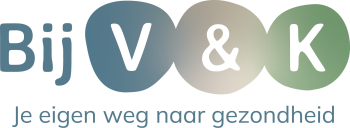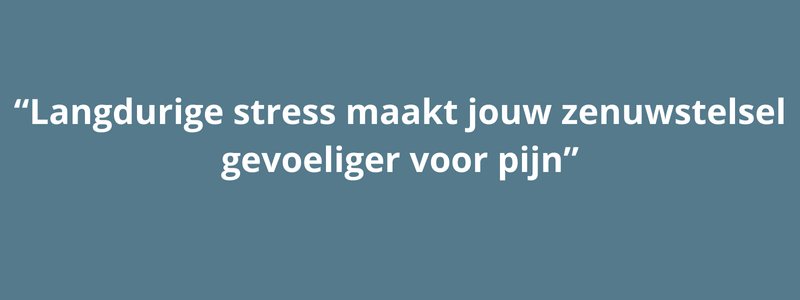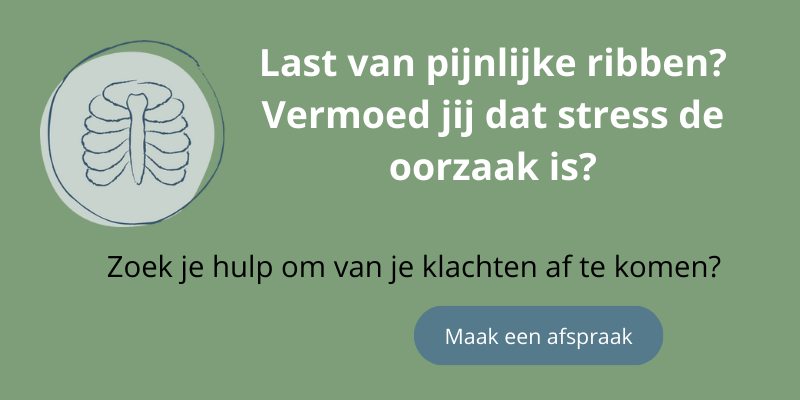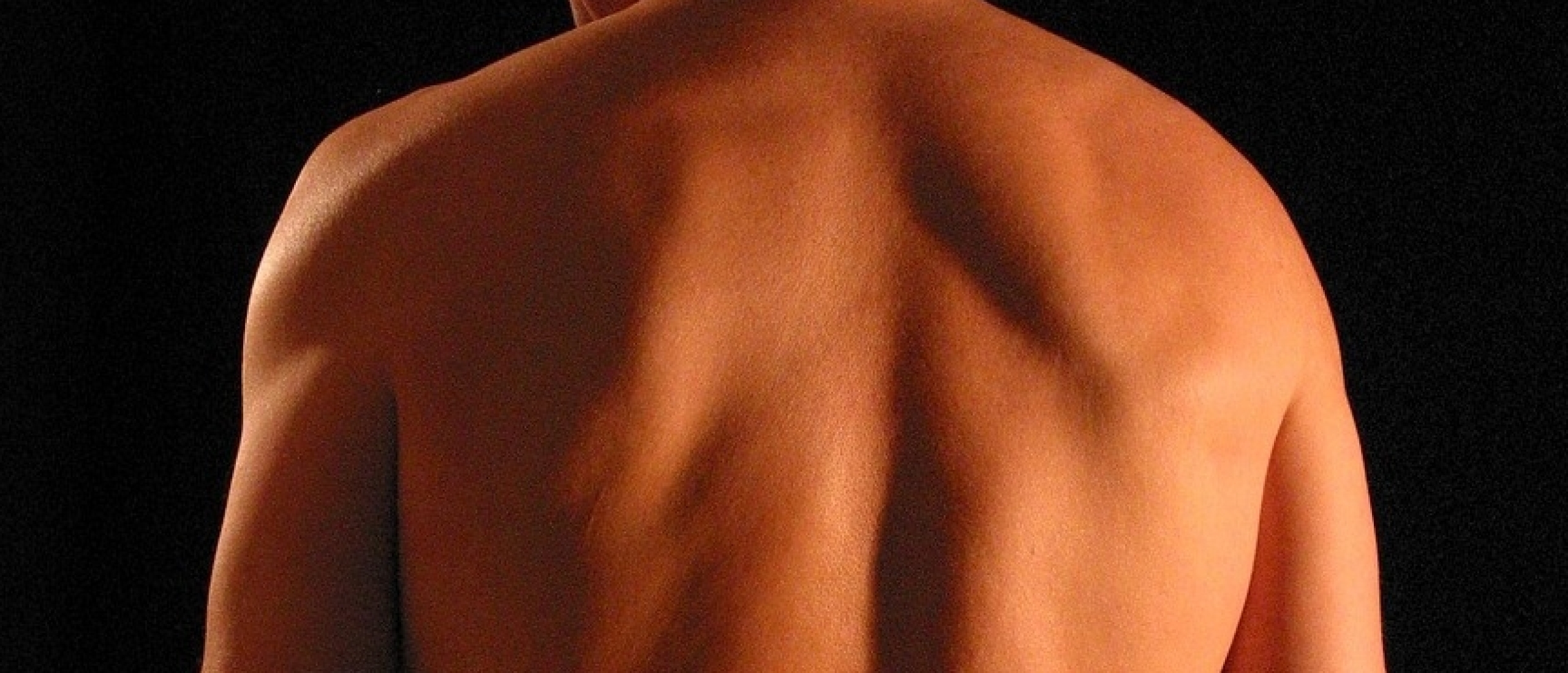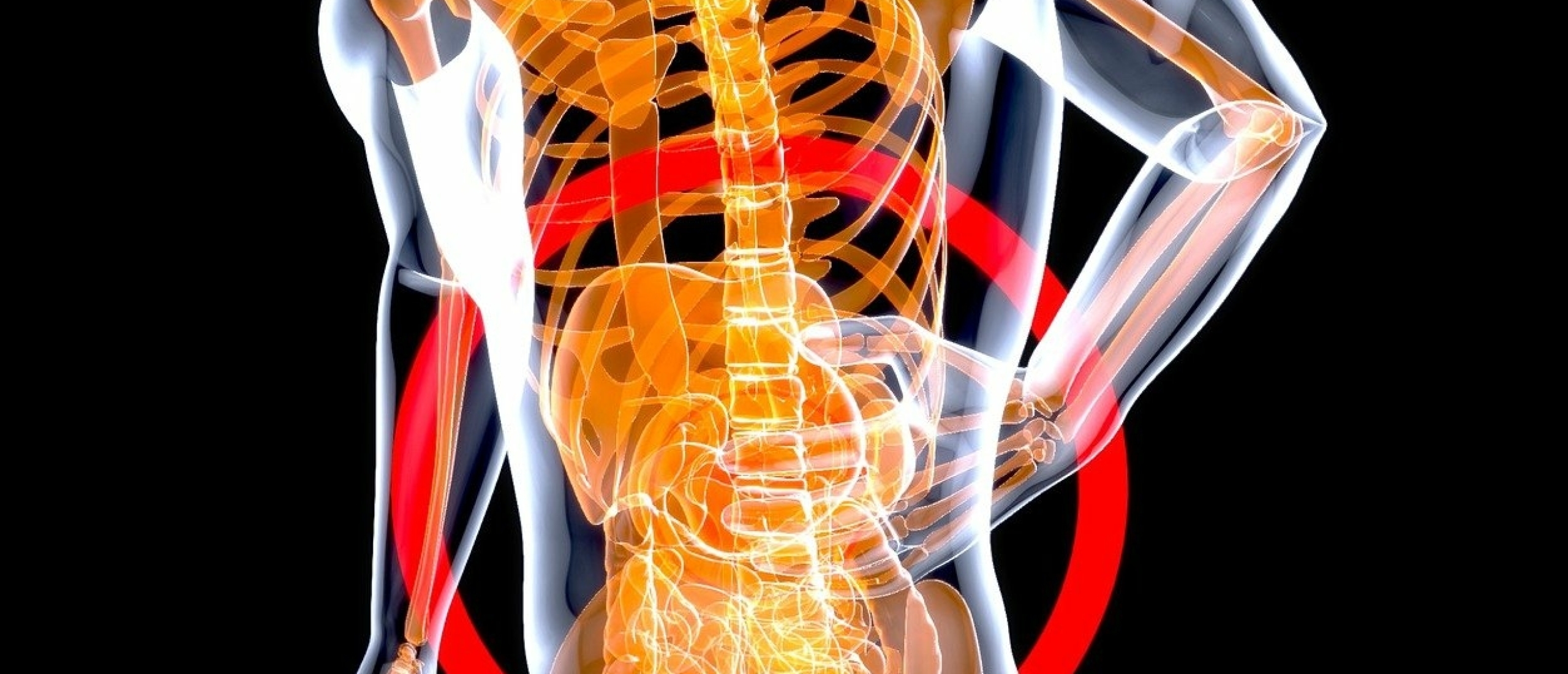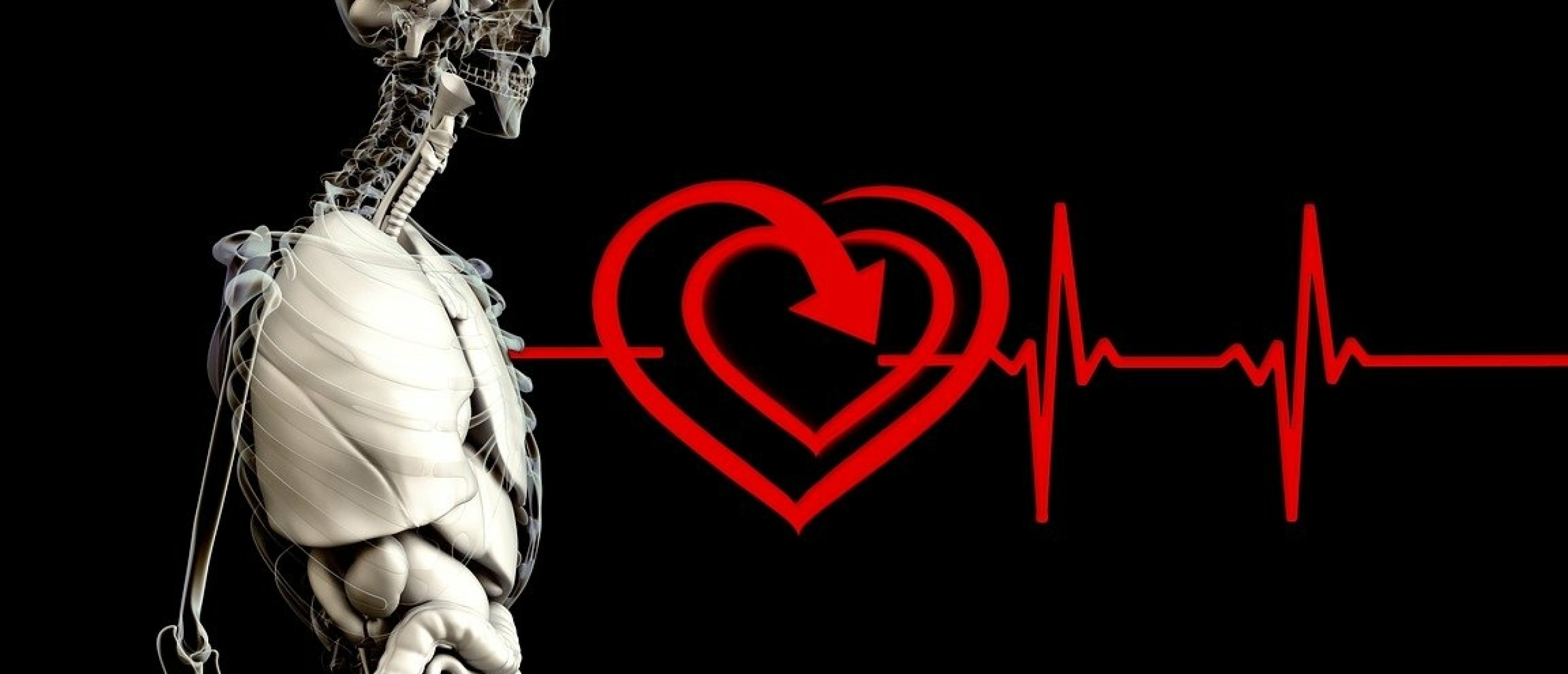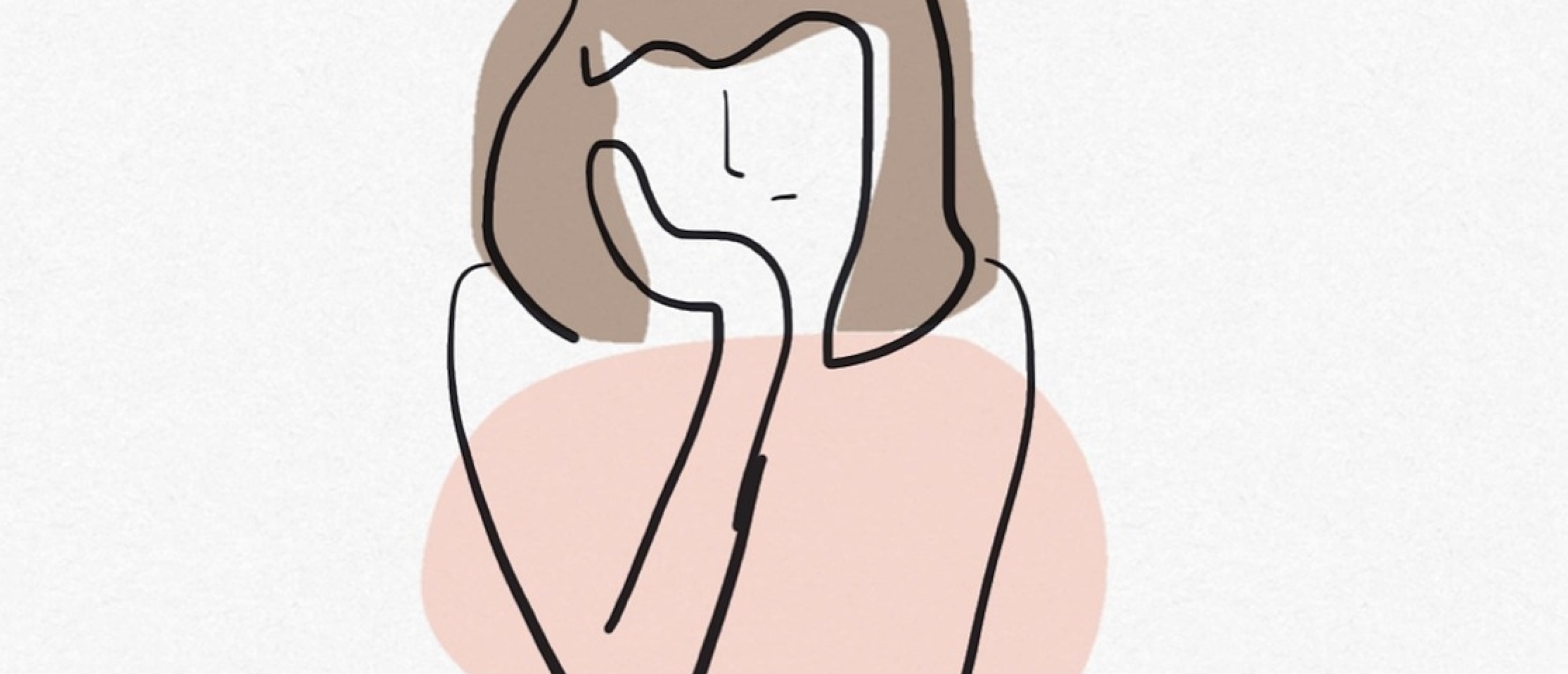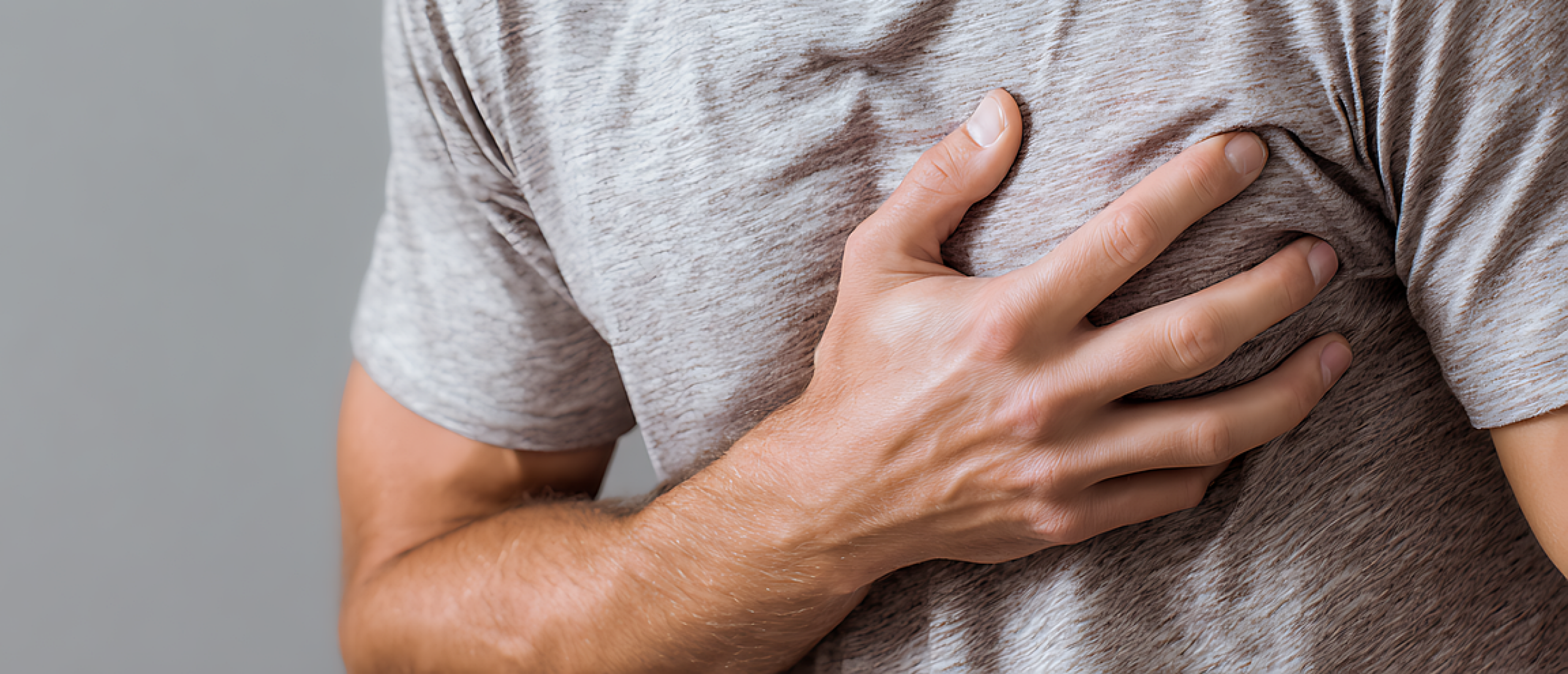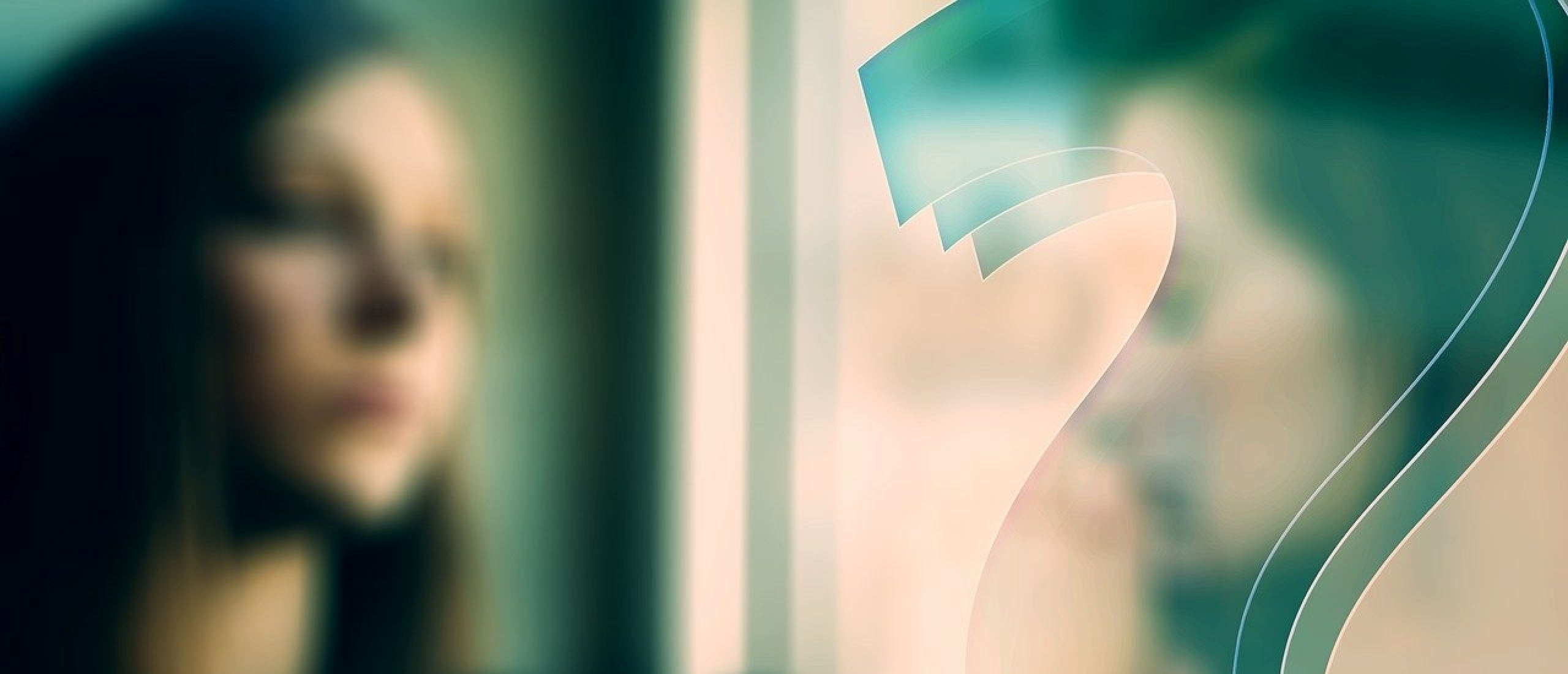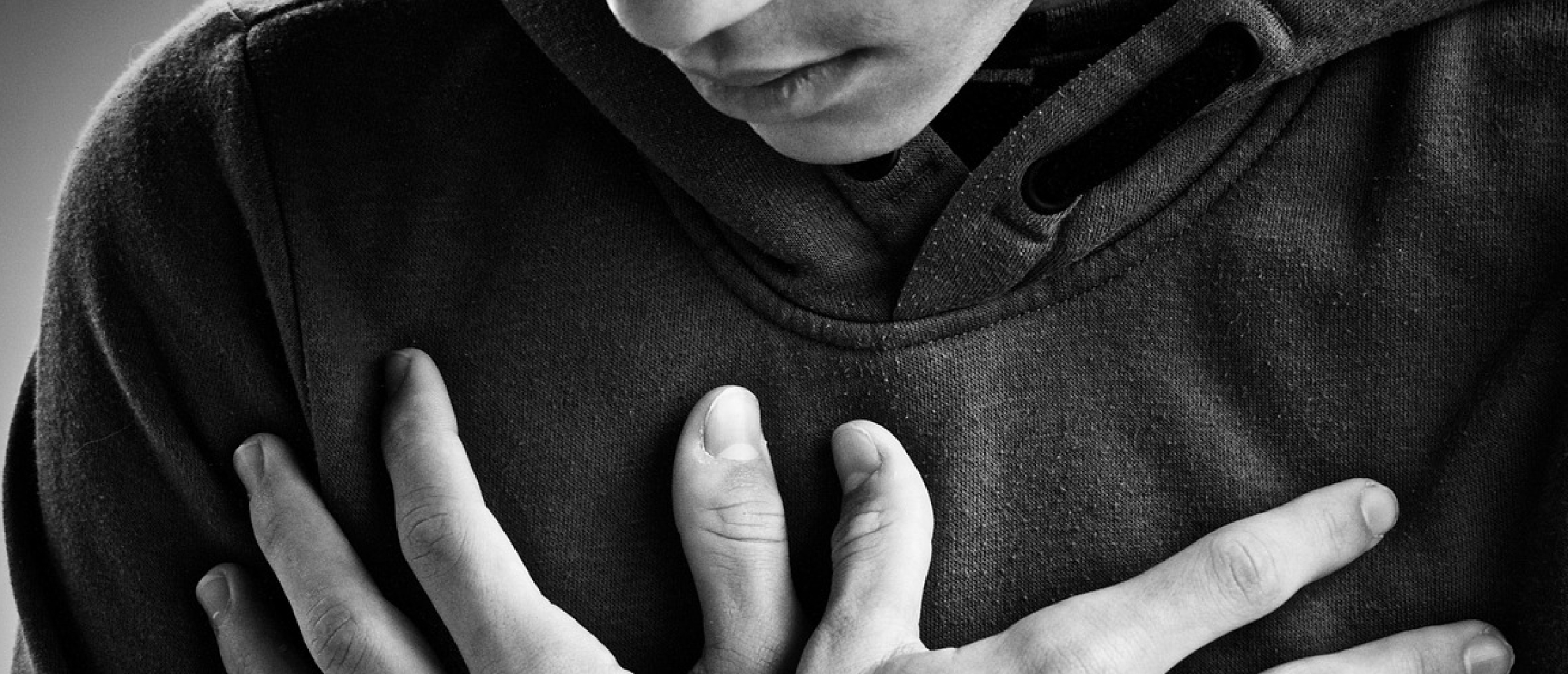
Je voelt steken of een drukkend gevoel bij je ribben. Het maakt je onzeker, misschien zelfs een beetje bang. Helemaal als je arts geen duidelijke oorzaak kan vinden. Dan komt al snel de vraag op: zou stress hierachter kunnen zitten? Pijnlijke ribben door stress is iets wat veel vaker voorkomt dan je misschien denkt.
Hoe stress pijn geeft bij je ribben
Stress werkt door in je hele lijf. Als je langere tijd gespannen bent, merk je vaak niet eens dat je je spieren vastzet. Vooral rond je schouders, nek, borst en de spieren tussen je ribben. Je lichaam doet dit automatisch, zonder dat je het doorhebt. Maar na een tijdje raken die spieren vermoeid, gespannen of zelfs verkrampt. Dat voel je. Soms als een zeurend gevoel, soms als scherpe steken. En dat kan je behoorlijk angstig maken.
De spieren tussen je ribben, je tussenribspieren, zijn gevoelig voor spanning. Als ze overbelast raken, kun je krampende pijn krijgen bij het inademen, bewegen of zelfs als je gewoon stilzit. Soms voelt het alsof er een strakke band om je borst zit, of alsof je niet diep genoeg kunt ademen. Pijnlijke ribben door stress kunnen dan ineens heel aanwezig zijn, juist op momenten dat je het niet verwacht.
Bij pijnlijke ribben door stress zie je vaak hetzelfde patroon terug:
- De arts vindt geen lichamelijke oorzaak.
- De pijn zit meestal aan één kant, stekend of drukkend.
- Je ribben zijn gevoelig als je erop drukt of als je ze aanraakt.
- Diep ademhalen doet meer pijn.
- De klachten worden erger in periodes van spanning of stress
Bij pijnlijke ribben door stress zie je vaak ook deze klachten:
Deze gebieden reageren sterk op stress dus het is helemaal logisch dat je hier naast je ribben ook last van hebt.
Waarom je stress vaak niet als oorzaak van pijnlijke ribben ziet.
We zijn geneigd om stress vooral als iets “psychisch” te zien. Daardoor herken je de signalen van je lijf niet altijd meteen. Je denkt eerst aan lichamelijke oorzaken: misschien heb je iets verrekt, een ontsteking, of, nog spannender, iets met je hart. Maar je lichaam liegt niet. Als spanning zich vastzet in je lijf, is dat een duidelijke boodschap: het is teveel, van binnen of van buiten. Tijd om te luisteren naar wat je lichaam je probeert te vertellen. Pijnlijke ribben door stress zijn een signaal van je lijf dat je ergens uit balans bent geraakt.
Wat kun je doen bij pijnlijke ribben door stress?
Herken waar de spanning vandaan komt. Kijk eens eerlijk naar je leven: waar voel je druk, mentaal of emotioneel?
- Leer bewust te ontspannen. Ademhalingsoefeningen, yoga, meditatie of gewoon een wandeling kunnen al veel doen.
- Laat je lichaam bewegen. Rustige beweging, zoals wandelen in de natuur of wat stretchen, helpt om spanning los te laten.
- Zoek hulp als dat fijn voelt: een goede massage, een coach of een cranio sacraal therapeut kan je ondersteunen weer echt te gaan ontspannen.
- En misschien wel het belangrijkste: wees mild en nieuwsgierig naar jezelf. Je lichaam doet pijn omdat het ergens uit balans is geraakt.
Heeft het een naam als je pijnlijke ribben hebt door stress?
Als je ribben, bij de verbinding met je borstbeen, pijnlijk zijn als je erop drukt dan wordt dat costochondritis genoemd. Zijn er zwellingen te zien en voelen in het kraakbeen bij je borstbeen dan noem je dit het syndroom van Tietze.
Het belang van luisteren naar je lichaam bij pijnlijke ribben
Pijnlijke ribben door stress kunnen je flink onzeker maken. Maar als stress de oorzaak is, heb je zelf invloed op je herstel. Door beter te luisteren naar de signalen van je lijf, kun je niet alleen de pijn verlichten, maar ook meer rust en vertrouwen in jezelf vinden.
Last van pijn in je ribben en vind je het lastig om naar je lijf te luisteren? Je bent niet de enige. Soms heb je gewoon even iemand nodig die met je meekijkt en je helpt weer contact te maken met je lichaam. Je bent van harte welkom om samen te onderzoeken wat jouw lijf je wil vertellen.
Bronnen en wetenschappelijke verdiepende literatuur: pijnlijke ribben en stress
Azimi SM, Keshtparvar F, Sadeghi Z, Bahramian H. Aberrant rib cage anatomy with false ribs attachment to the sternum: review of the literature focused on slipping ribs syndrome case reports. Anat Cell Biol. 2025 Apr 30. doi: 10.5115/acb.24.227. Epub ahead of print. PMID: 40300820.
Chen A, Shi J, Wu H, Shi W. Chronic back pain: recognising twelfth rib syndrome. BMJ Case Rep. 2025 Jul 27;18(7):e266106. doi: 10.1136/bcr-2025-266106. PMID: 40716788.
Maatman RC, Boelens OB, Scheltinga MRM, Roumen RMH. Chronic localized back pain due to entrapment of cutaneous branches of posterior rami of the thoracic nerves (POCNES): a case series on diagnosis and management. J Pain Res. 2019 Feb 19;12:715-723. doi: 10.2147/JPR.S178492. PMID: 30863144; PMCID: PMC6388752.
Lan QL, Lin XX, Wang Y, Xu BB, Shu KY, Zhang XJ. The Relationship Between Upper Esophageal Sphincter Pressure and Psychological Status in Patients with Globus Sensation. Int J Gen Med. 2021 Nov 25;14:8805-8810. doi: 10.2147/IJGM.S337165. PMID: 34858048; PMCID: PMC8630375.
Akbaş Y, Atalık G, Yılmaz M, Bozdayi G. Determination of the Relationship between Globus-Type Complaints and COVID-19 Anxiety in Adult Cases with COVID-19. Folia Phoniatr Logop. 2024;76(2):183-191. doi: 10.1159/000533564. Epub 2023 Aug 14. PMID: 37573781; PMCID: PMC10997256.
Pollack A, Charles J, Harrison C, Britt H. Globus hystericus. Aust Fam Physician. 2013 Oct;42(10):683. PMID: 24130967.
Imperiale MN, Lieb R, Meinlschmidt G. Treatment-associated network dynamics in patients with globus sensations: a proof-of-concept study. Sci Rep. 2023 Sep 20;13(1):15615. doi: 10.1038/s41598-023-42186-y. PMID: 37730963; PMCID: PMC10511470.
Wankhar D, Prabu Kumar A, Vijayakumar V, A V, Balakrishnan A, Ravi P, Rudra B, K M. Effect of Meditation, Mindfulness-Based Stress Reduction, and Relaxation Techniques as Mind-Body Medicine Practices to Reduce Blood Pressure in Cardiac Patients: A Systematic Review and Meta-Analysis. Cureus. 2024 Apr 17;16(4):e58434. doi: 10.7759/cureus.58434. PMID: 38765359; PMCID: PMC11099499.
Biltz RG, Sawicki CM, Sheridan JF, Godbout JP. The neuroimmunology of social-stress-induced sensitization. Nat Immunol. 2022 Nov;23(11):1527-1535. doi: 10.1038/s41590-022-01321-z. Epub 2022 Nov 11. PMID: 36369271; PMCID: PMC10000282.
Miller GE, Chen E, Sze J, Marin T, Arevalo JM, Doll R, Ma R, Cole SW. A functional genomic fingerprint of chronic stress in humans: blunted glucocorticoid and increased NF-kappaB signaling. Biol Psychiatry. 2008 Aug 15;64(4):266-72. doi: 10.1016/j.biopsych.2008.03.017. Epub 2008 Apr 28. PMID: 18440494; PMCID: PMC2581622.
Sapolsky RM, Krey LC, McEwen BS. The neuroendocrinology of stress and aging: the glucocorticoid cascade hypothesis. Endocr Rev. 1986 Aug;7(3):284-301. doi: 10.1210/edrv-7-3-284. PMID: 3527687.
Mishra AK, Varma AR. A Comprehensive Review of the Generalized Anxiety Disorder. Cureus. 2023 Sep 28;15(9):e46115. doi: 10.7759/cureus.46115. PMID: 37900518; PMCID: PMC10612137.
Karin O, Raz M, Tendler A, Bar A, Korem Kohanim Y, Milo T, Alon U. A new model for the HPA axis explains dysregulation of stress hormones on the timescale of weeks. Mol Syst Biol. 2020 Jul;16(7):e9510. doi: 10.15252/msb.20209510. PMID: 32672906; PMCID: PMC7364861.
Schuurmans AAT, Nijhof KS, Cima M, Scholte R, Popma A, Otten R. Alterations of autonomic nervous system and HPA axis basal activity and reactivity to acute stress: a comparison of traumatized adolescents and healthy controls. Stress. 2021 Nov;24(6):876-887. doi: 10.1080/10253890.2021.1900108. Epub 2021 Apr 16. PMID: 33860734.
Barel E, Abu-Shkara R, Colodner R, Masalha R, Mahagna L, Zemel OC, Cohen A. Gonadal hormones modulate the HPA-axis and the SNS in response to psychosocial stress. J Neurosci Res. 2018 Aug;96(8):1388-1397. doi: 10.1002/jnr.24259. Epub 2018 May 9. PMID: 29741787.
Seng JJB, Kho ZC, Kaur N. Premature Calcification of Costochondral Cartilage: A Scoping Review of the Literature. Cureus. 2024 Dec 8;16(12):e75328. doi: 10.7759/cureus.75328. PMID: 39776747; PMCID: PMC11706305.
Ayloo A, Cvengros T, Marella S. Evaluation and treatment of musculoskeletal chest pain. Prim Care. 2013 Dec;40(4):863-87, viii. doi: 10.1016/j.pop.2013.08.007. PMID: 24209723.
Proulx AM, Zryd TW. Costochondritis: diagnosis and treatment. Am Fam Physician. 2009 Sep 15;80(6):617-20. PMID: 19817327.
de Carvalho JF. Tietze's Syndrome. Mediterr J Rheumatol. 2022 Dec 31;33(4):467-468. doi: 10.31138/mjr.33.4.467. PMID: 37034373; PMCID: PMC10075373.
Mettola G, Perricone C. Tietze Syndrome. Mediterr J Rheumatol. 2020 Apr 24;31(2):224. doi: 10.31138/mjr.31.2.224. PMID: 32676562; PMCID: PMC7362116.
Rosenberg M, Sina RE, Conermann T. Tietze Syndrome. 2024 Jan 26. In: StatPearls [Internet]. Treasure Island (FL): StatPearls Publishing; 2024 Jan–. PMID: 33232033.
Tan C, Lim R, Yeow M, Fong J, Balakrishnan T. Tietze's Syndrome Post-COVID-19 Infection in an Adult Patient. Cureus. 2022 Jul 31;14(7):e27499. doi: 10.7759/cureus.27499. PMID: 37817896; PMCID: PMC10564091.
Kuridze N, Okuashvili I, Tsverava M, Minadze E. Tietze Syndrome as a Cause of Chest Pain in the Post-COVID-19 Period. Cureus. 2023 Apr 10;15(4):e37360. doi: 10.7759/cureus.37360. PMID: 37182083; PMCID: PMC10170415.
Yıldız ÖÖ, İnan K, Ağababaoğlu İ, Çınar E. Local treatment of pain in Tietze syndrome: A single-center experience. Turk Gogus Kalp Damar Cerrahisi Derg. 2021 Apr 26;29(2):239-247. doi: 10.5606/tgkdc.dergisi.2021.21120. PMID: 34104518; PMCID: PMC8167461.
Gundersen A, Borgstrom H, McInnis KC. Trunk Injuries in Athletes. Curr Sports Med Rep. 2021 Mar 1;20(3):150-156. doi: 10.1249/JSR.0000000000000819. PMID: 33655996.
Barranco-Trabi J, Mank V, Roberts J, Newman DP. Atypical Costochondritis: Complete Resolution of Symptoms After Rib Manipulation and Soft Tissue Mobilization. Cureus. 2021 Apr 8;13(4):e14369. doi: 10.7759/cureus.14369. PMID: 33976991; PMCID: PMC8106472.
Ergenç İ, Şanal Toprak C, Odabaşı Z. Staphylococcus aureus costochondritis and chest wall abscess in a COVID-19 patient treated with tocilizumab. Turk J Phys Med Rehabil. 2021 Sep 1;67(3):382-385. doi: 10.5606/tftrd.2021.8208. PMID: 34870129; PMCID: PMC8607000.
Rushton S, Carman MJ. Chest Pain: If It Is Not the Heart, What Is It? Nurs Clin North Am. 2018 Sep;53(3):421-431. doi: 10.1016/j.cnur.2018.04.009. Epub 2018 Jul 11. PMID: 30100007.
Qureshi A, Nazeef A, Ali H, Gyawali J, Subhan N. Tubercular Costochondritis Presenting as Chest Wall Swelling: A Case Report of an Atypical Tuberculosis Presentation. Cureus. 2024 Aug 29;16(8):e68158. doi: 10.7759/cureus.68158. PMID: 39347238; PMCID: PMC11439087.
Inoue K, Minamino T. How to Approach Patients with Acute Chest Pain. Rev Cardiovasc Med. 2024 Aug 22;25(8):302. doi: 10.31083/j.rcm2508302. PMID: 39228492; PMCID: PMC11366986.
Jones DB, Abbott BG. Which Test is Best for Pain in the Chest? R I Med J (2013). 2025 Feb 3;108(2):16-22. PMID: 39878658.
Berg AT, Stafne SN, Hiller A, Slørdahl SA, Aamot IL. Physical therapy intervention in patients with non-cardiac chest pain following a recent cardiac event: A randomized controlled trial. SAGE Open Med. 2015 Apr 16;3:2050312115580799. doi: 10.1177/2050312115580799. PMID: 26770781; PMCID: PMC4679239.
Mohammadpour A, Mohammadian B, Basiri Moghadam M, Nematollahi MR. The effects of topical heat therapy on chest pain in patients with acute coronary syndrome: a randomised double-blind placebo-controlled clinical trial. J Clin Nurs. 2014 Dec;23(23-24):3460-7. doi: 10.1111/jocn.12595. Epub 2014 Apr 3. PMID: 24698126.
